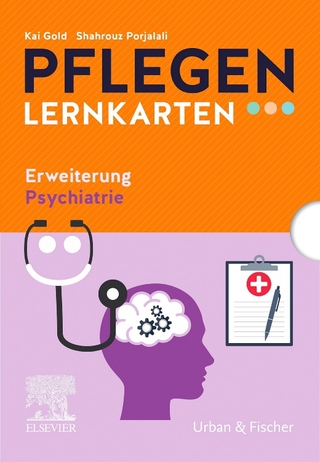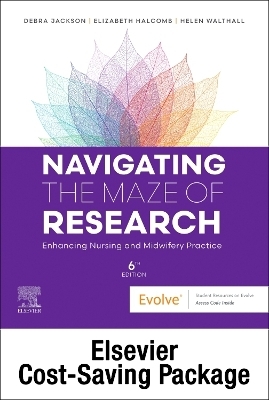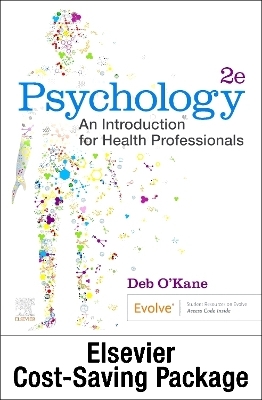
MyLab Nursing for the Practical/Vocational Nurse (text + access code)
Pearson
978-0-13-503458-3 (ISBN)
- Titel z.Zt. nicht lieferbar
- Versandkostenfrei innerhalb Deutschlands
- Auch auf Rechnung
- Verfügbarkeit in der Filiale vor Ort prüfen
- Artikel merken
ALERT: Before you purchase, check with your instructor or review your course syllabus to ensure that you select the correct ISBN. Several versions of Pearson's MyLab & Mastering products exist for each title, including customized versions for individual schools, and registrations are not transferable. In addition, you may need a CourseID, provided by your instructor, to register for and use Pearson's MyLab & Mastering products.
Packages
Access codes for Pearson's MyLab & Mastering products may not be included when purchasing or renting from companies other than Pearson; check with the seller before completing your purchase.
Used or rental books
If you rent or purchase a used book with an access code, the access code may have been redeemed previously and you may have to purchase a new access code.
Access codes
Access codes that are purchased from sellers other than Pearson carry a higher risk of being either the wrong ISBN or a previously redeemed code. Check with the seller prior to purchase.
--
My Nursing Lab/LPN and LVN
Table of Contents
MODULE 1.0 MATH REVIEW, DOSAGE CALCULATION, AND MEDICATION ADMINISTRATION
1.1 BASIC ARITHMETIC PRINCIPLES
1.1.1 Apply the principles of arithmetic to solve problems adding, subtracting, multiplying, and dividing whole numbers.
1.1.2 Identify the symbols used in Roman numerals and apply them to problem solving
1.2 WORKING WITH FRACTIONS
1.2.1 Recognize the relative value of fractions and reduce them to their lowest terms.
1.2.2 Apply the principles of arithmetic to adding, subtracting, multiplying, and dividing fractions.
1.3 WORKING WITH DECIMALS
1.3.1 Identify the relative value of decimals.
1.3.2 Apply the principles of arithmetic to solve problems adding, subtracting, multiplying, and dividing decimals.
1.4 WORKING WITH PERCENTS, RATIOS, AND PROPORTIONS
1.4.1 Identify the relative value of percent to other fractions and solve problems using percentages
1.4.2 Compare and contrast the value of ratio to other fractions and solve problems using ratios.
1.4.3 Given the properties, solve for the unknown in a proportion.
1.5 SYSTEMS OF Measurement
1.5.1 List the commonly used metric measures for weight, volume, and length and their abbreviations.
1.5.2 State the commonly used equivalents in the metric system.
1.5.3 Convert units of volume, weight, and length within the metric system.
1.5.4 Identify the commonly used measures in the apothecary and household systems, with their symbols or abbreviations.
1.5.5 List the commonly used equivalents within the apothecary and household systems.
1.5.6 Convert from one unit to another within the apothecary and household systems.
1.6 DOSAGE CALCULATIONS FOR MEDICATIONS
1.6.1 Read medication labels and use pertinent information to calculate the correct medication dosages.
1.6.2 Interpret the label of a powdered medication, reconstitute the powder, and determine the correct dosage to give.
1.6.3 Use the given formula to calculate intravenous fluid flow rate for gravity IV and electronic pump.
1.6.4 Interpret the order and the medication label correctly, and calculate the heparin infusion rate.
1.6.5 Determine the safe dose by applying the appropriate formula for calculating pediatric dosages.
1.6.6 Given an insulin syringe, be able to read the syringe and draw up the correct dose.
1.6.7 Given a solution, be able to state the amount of solvent.
1.7 MEDICATION ADMINISTRATION
1.7.1 Describe drug sources, uses, classification, legislation, and nursing responsibilities.
1.7.2 Describe pharmacokinetics and pharmcodynamics.
1.7.3 Demonstrate proper drug administration for enteral, parenteral, and percutaneous routes.
1.7.4 Describe adverse drug reactions and interactions.
1.7.5 Describe proper medication administration using the nursing process.
1.7.6 Describe nursing care aimed at preventing medication errors.
MODULE 2.0 FUNDAMENTALS
2.1 NURSING PROCESS
2.1.1 Describe the nursing process as it is used in nursing practice.
2.1.2 Describe the steps in the nursing process.
2.2 THE HEALTH TEAM AND HEALTHCARE SYSTEM
2.2.1 List and describe the role of members of the health team.
2.2.2 Describe and explain three levels of health care.
2.3 CULTURE
2.3.1 Define how culture and ethnicity affect values, beliefs, and behaviors.
2.3.2 Identify how cultural concepts affect healthcare delivery.
2.3.3 Describe different family structures and roles.
2.3.4 Describe the purpose of religion and its relevance to client care.
2.4 ETHICS AND LEGAL ISSUES
2.4.1 Describe legal aspects of nursing.
2.4.2 Discuss the importance of advanced directives.
2.5 COMMUNICATION
2.5.1 Describe the communication process.
2.5.2 Distinguish between therapeutic and nontherapeutic communication.
2.6 VITAL SIGNS AND PHYSICAL ASSESSMENT
2.6.1 Describe the nursing responsibility in performing a physical assessment.
2.6.2 Describe methods used for taking, recording, and interpreting vital signs and other data.
2.7 ADMISSION/DISCHARGE/DOCUMENTATION
2.7.1 Discuss nursing responsibilities related to admission, transfer, and discharge.
2.7.2 Describe acceptable guidelines for documentation.
2.8 COMFORT AND HYGIENE
2.8.1 List measures to promote comfort.
2.8.2 Discuss good physical care measures.
2.9 SAFETY AND INFECTION CONTROL
2.9.1 Describe the infectious process.
2.9.2 Describe the body’s defenses against infection.
2.9.3 List measures to prevent the spread of infection.
2.10 ACTIVITY, REST AND SLEEP
2.10.1 Describe principles of good body mechanics.
2.10.2 Discuss problems associated with immobility.
2.10.3 Describe factors influencing rest and sleep.
2.10.4 Discuss measures to promote rest and sleep.
2.11 OXYGENATION
2.11.1 Describe nursing assessment of clients receiving oxygen.
2.11.2 Discuss nursing responsibilities for clients with airway problems.
2.11.3 Discuss nursing concerns for clients with tracheotomies.
2.12 WOUND CARE
2.12.1 Differentiate different types of woundss.
2.12.2 Describe risk factors for wound.
2.12.3 Discuss wound staging.
2.12.4 Describe nursing responsibilities for wound care and preventive measures.
2.12.5 List the principles and purposes in the use of hot and cold applications.
2.13 NUTRITION, FLUIDS, AND ELECTROLYTES
2.13.1 Describe the elements that make up a nutritional diet and their sources.
2.13.2 Discuss fluid and electrolyte needs in the body and their relationship to acid-base balance.
2.13.3 Define the modifications seen in diet therapy, their purpose and objectives.
2.14 ELIMINATION
2.14.1 Describe normal characteristics of urine and feces.
2.14.2 Describe nursing responsibilities in assisting clients with elimination problems.
2.14.3 Describe urinary catheters, their uses and care.
2.14.4 Describe nursing responsibilities for enema administration.
2.14.5 Discuss collection of urine and feces specimens.
2.15 SENSORY PERCEPTION AND PAIN
2.15.1 Describe levels of consciousness.
2.15.2 List the components of a neurological nursing assessment.
2.15.3 Describe the procedure for assessing organs in the sensory system.
2.15.4 Discuss some of the factors that contribute to the loss of sensory perception and appropriate nursing responses.
2.15.5 Describe response to pain and nursing management strategies.
2.16 DEATH AND DYING
2.16.1 Describe Kubler-Ross’s death and dying concepts.
2.16.2 Discuss the client’s physical and emotional changes as death approaches.
2.16.3 Describe the nursing responsibilities related to postmortem care.
MODULE 3 MEDICAL-SURGICAL NURSING
3.1 INFLAMMATION, IMMUNITY, AND INFECTION
3.1.1 Differentiate between the inflammatory response and infection.
3.1.2 Discuss the nursing responsibilities in caring for clients with inflammation and infection.
3.1.3 Describe commonly used antimicrobial medication, nursing implications, and client teaching.
3.1.4 Compare natural and acquired, and passive and active immunity.
3.1.5 Describe treatment and nursing care for clients with altered immune responses.
3.2 CARING FOR SURGICAL CLIENTS
3.2.1 Identify critical elements for preoperative nursing care.
3.2.2 Discuss nursing care during surgery and postoperatively.
3.2.3 Describe drugs used preoperatively, intraoperatively, and postoperatively.
3.3 CLIENTS WITH CANCER
3.3.1 Discuss the pathophysiology of cancer.
3.3.2 Discuss common signs of cancer and diagnostic tests.
3.3.3 Describe various treatment modalities and the related nursing care for clients with cancer.
3.4 DISORDERS AFFECTING THE INTEGUMENTARY SYSTEM
3.4.1 Compare pathophysiology, symptoms, treatment, and nursing care for clients with common skin disorders.
3.4.2 Discuss classification, estimation, and treatment for burns.
3.4.3 Describe nursing responsibilities for clients with burn injuries.
3.5 MUSCULOSKELETAL DISORDERS
3.5.1 Describe and compare pathophysiology, symptoms, treatment, and nursing care for clients with musculoskeletal injuries and fractures.
3.5.2 Compare pathophysiology, symptoms, treatment, and nursing care for clients with common musculoskeletal disorders.
3.6 DISORDERS AFFECTING THE NERVOUS SYSTEM
3.6.1 Describe the diagnosis, treatment, and nursing care for common neurological injuries.
3.6.2 Describe the diagnosis, treatment, and nursing care for common neurological degenerative disorders.
3.7 DISORDERS OF THE EYES AND EARS, THE SENSORY SYSTEM
3.7.1 Describe the diagnosis, testing, treatment, and nursing care for common eye disorders.
3.7.2 Describe the diagnosis, testing, treatment, and nursing care for common ear disorders.
3.8 ENDOCRINE SYSTEM
3.8.1 Describe common diagnostic tests and nursing care for endocrine disorders.
3.8.2 Describe medical and surgical treatment and nursing for clients with endocrine disorders.
3.9 RESPIRATORY SYSTEM
3.9.1 Describe common diagnostic tests and nursing care for common respiratory disorders.
3.9.2 Describe treatment and nursing care for common respiratory disorders.
3.10 DISEASES OF THE CIRCULATORY SYSTEM
3.10.1 Describe the diagnostic tests for common cardiovascular disorders.
3.10.2 Describe diagnostic tests, treatment, and nursing care for common hematologic and lymphatic disorders.
3.10.3 Describe the treatment and nursing care for common cardiovascular disorders.
3.11 GASTROINTESTINAL DISORDERS
3.11.1 Describe common diagnostic tests used to detect gastrointestinal disorders.
3.11.1 Describe treatment and nursing care for clients with gastrointestinal disorders.
3.12 THE FEMALE AND MALE REPRODUCTIVE SYSTEM
3.12.1 Describe common diagnostic tests used to detect reproductive disorders.
3.12.2 Describe manifestations, treatment, and nursing care for clients with common female reproductive disorders.
3.12.3 Describe manifestations, treatment, and nursing care for clients with common male reproductive disorders.
3.12.4 Describe manifestations, treatment, and nursing care for clients with sexually transmitted infections.
3.13 GENITOURINARY SYSTEM
3.13.1 Describe common diagnostic tests and nursing care for common genitourinary disorders.
3.13.2 Describe treatment and nursing care for common genitourinary disorders.
MODULE 4 GROWTH AND DEVELOPMENT THROUGH ADOLESCENCE / NURSING CARE OF CHILDREN
4.1 GROWTH AND DEVELOPMENT
4.1.1 Define key terms and patterns of growth and development.
4.1.2 Describe the factors that influence growth and development.
4.1.3 Describe the levels of prevention and health promotion.
4.1.4 Describe the developmental milestones, safety, and play activities for infant through adolescent stages.
4.1.5 Describe health promotion and nutritional needs for each age group.
4.1. 6 Describe the needs of children during hospitalization.
4.2 PEDIATRIC RESPIRATORY DISORDERS
4.2.1 Describe diagnostic tests and nursing care for common childhood respiratory disorders.
4.2.2 Describe treatment and nursing care for common respiratory disorders affecting infants and children.
4.3 PEDIATRIC GASTROINTESTINAL DISORDERS
4.3.1 Describe common diagnostic tests used to detect gastrointestinal disorders in infants and children.
4.3.2 Describe treatment and nursing care for infants and children with common gastrointestinal disorders
4.4 PEDIATRIC HEMATOLOGICAL DISORDERS
4.4.1 Describe the diagnostic tests for common hematological disorders in infants and children.
4.4.2 Describe the treatment and nursing care for common hematological disorders in infants and children in infants and children.
4.5 PEDIATRIC CARDIOVASCULAR DISORDERS
4.5.1 Describe the diagnostic tests for common cardiovascular disorders in
infants and children.
4.5.2 Describe the treatment and nursing care for common cardiovascular
disorders in infants and children.
4.6 PEDIATRIC ENDOCRINE DISORDERS
4.6.1 Describe common diagnostic tests and nursing care for endocrine disorders.
4.6.2 Describe medical and surgical treatment and nursing for infants and children with endocrine disorders.
4.7 PEDIATRIC NEUROLOGICAL DISORDERS
4.7.1 Describe common diagnostic tests and nursing care for neurological disorders.
4.7.2 Describe medical and surgical treatment and nursing for infants and children with neurological disorders.
4.8 PEDIATRIC MUSCULOSKELETAL DISORDERS
4.8.1 Describes and compare fractures and nursing care for clients with musculoskeletal injuries and fractures.
4.8.2 Compare pathophysiology, symptoms, treatment and nursing care for infants and children with common musculoskeletal disorders.
4.9 PEDIATRIC GENITOURINARY DISORDERS
4.9.1 Describe the nursing care for clients undergoing diagnostic tests for the
genitourinary system.
4.9.2 Compare pathophysiology, symptoms, treatment and nursing care for infants and children with common genitourinary disorders.
4.10 PEDIATRIC SKIN DISORDERS
4.10.1 Compare pathophysiology, symptoms, treatment and nursing care for client with common pediatric skin disorders
4.10.2 Discuss classification, estimation and treatment for burns in infants and children.
4.10.3 Describe nursing responsibilities for infants and children with burn injuries.
4.11 PEDIATRIC EYE DISORDERS
4.11.1 Describe the diagnosis, treatment and nursing care for common pediatric eye disorders.
4.11.2 Describe the diagnosis, treatment and nursing care for common eye disorders in infants and children
MODULE 5. MATERNAL-NEWBORN NURSING CARE
5.1 Describe normal pregnancy and the prenatal period.
5.2 Describe normal labor and delivery, possible complications, and the role of the
practical nurse.
5.3 Discuss the postpartum period, common complications, and nursing care.
5.4 Describe the characteristics and nursing care of the normal newborn.
5.5 Discuss common disorders affecting the newborn.
MODULE 6 OLDER ADULT NURSING CARE
6.1 Describe the demographics, myths, and common theories about aging .
6.2 Describe the normal physical changes of aging.
6.3 Describe the common psychosocial changes affecting older adults.
6.4 Discuss the nursing needs of older clients with common health problems.
MODULE 7 MENTAL HEALTH NURSING CARE
7.1 Distinguish between characteristics of mental health and mental illness.
7.2 Describe elements of a therapeutic relationship.
7.3 Describe common theories of personality development.
7.4. Describe nursing care and treatment modalities for major mental disorders.
MODULE 8 DISASTER NURSING
8.1. Describe principles of basic life support.
8.2. Describe emergency management for common physical emergencies.
8.3. Discuss care for the rape victim.
8.4. Discuss the nursing role following acts of terrorism and natural disasters.
MODULE 9 LEADERSHIP AND MANAGEMENT
9.1 Discuss leadership and the different leadership styles.
9.2 Describe the characteristics of a good leader.
9.3 Describe managers and the functions of management.
| Erscheint lt. Verlag | 16.8.2010 |
|---|---|
| Sprache | englisch |
| Maße | 10 x 10 mm |
| Gewicht | 998 g |
| Themenwelt | Pflege ► Fachpflege ► Neurologie / Psychiatrie |
| ISBN-10 | 0-13-503458-2 / 0135034582 |
| ISBN-13 | 978-0-13-503458-3 / 9780135034583 |
| Zustand | Neuware |
| Haben Sie eine Frage zum Produkt? |
aus dem Bereich


